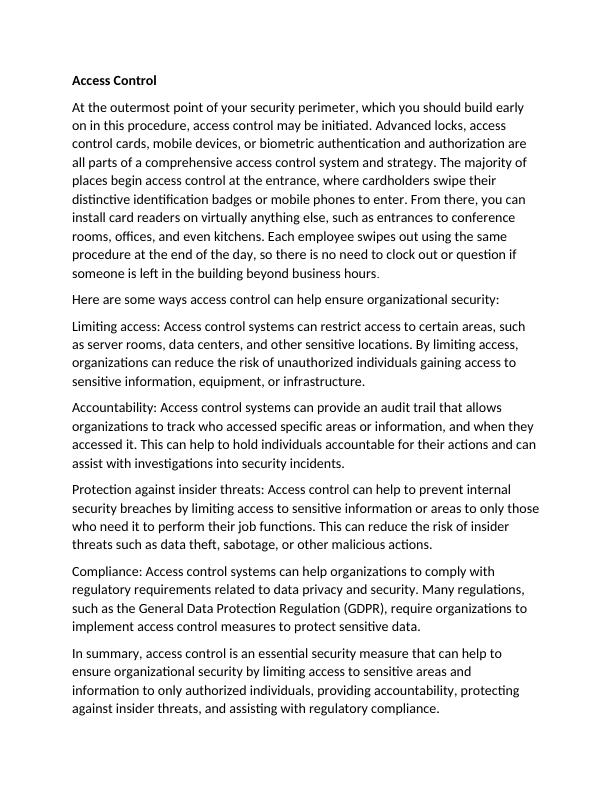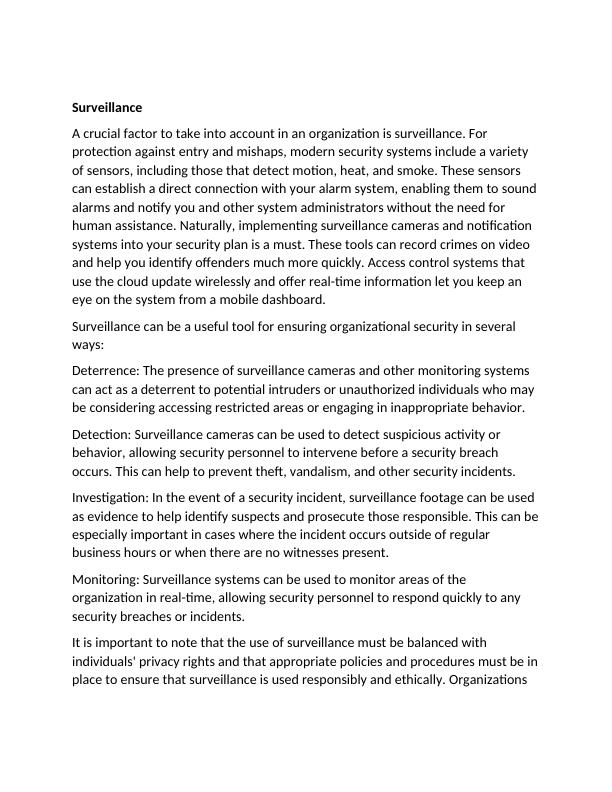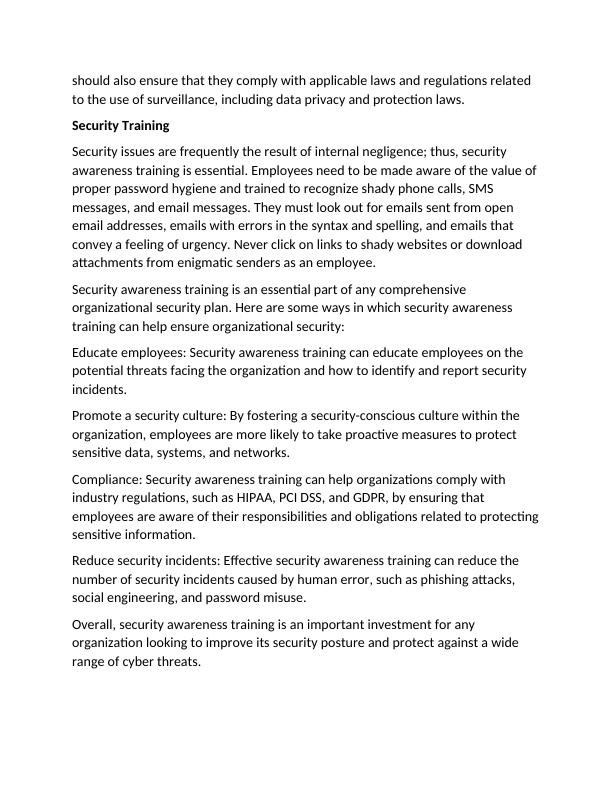Enhancing Organizational Security with Access Control and Surveillance
8 Pages2757 Words235 Views
Added on 2023-05-16
About This Document
In this article we will discuss about enhancing organizational security and below are the summaries point:-
-
Limiting access: Access control systems restrict access to sensitive areas, reducing the risk of unauthorized access.
-
Accountability: Access control provides an audit trail, tracking who accessed specific areas or information.
-
Insider threat protection: Access control prevents internal security breaches by limiting access to only authorized individuals.
Enhancing Organizational Security with Access Control and Surveillance
Added on 2023-05-16
ShareRelated Documents
End of preview
Want to access all the pages? Upload your documents or become a member.
IT In Security System Assignment Sample
|5
|798
|22
Physical Security Measures: A Case Study of Extreme Corporation
|12
|1005
|438
Physical Security is the Process of Securing the Hardware
|8
|2647
|154
Network Security Assessment: Physical, Mobile, Perimeter and Host Defense
|8
|2647
|67
VIDEO SECURITY SYSTEM Report
|4
|711
|20
Security Management Report - ISMS, Physical Security, Access Control, Surveillance Systems, IDS
|22
|4174
|335



